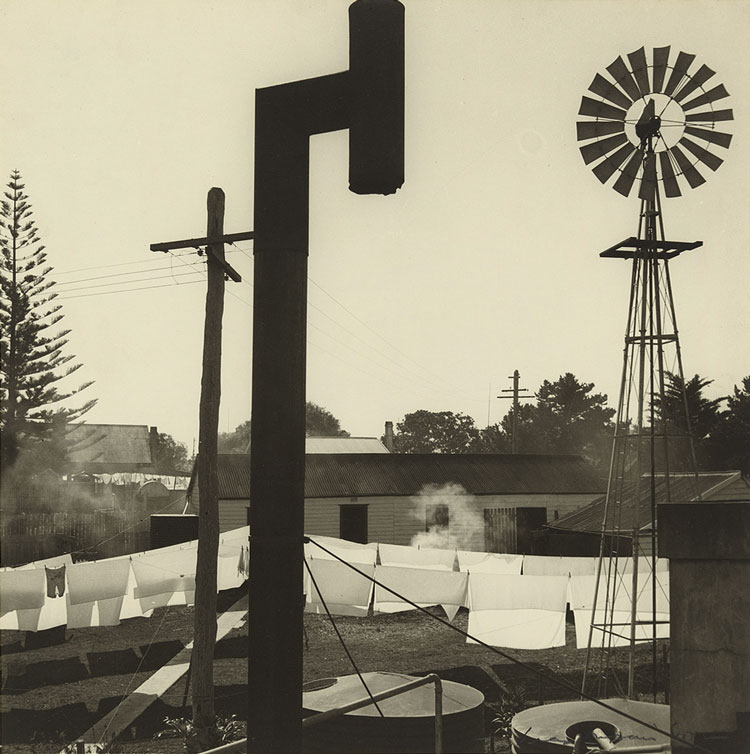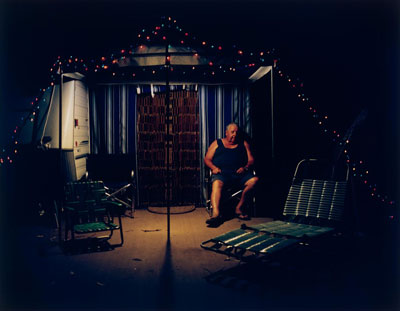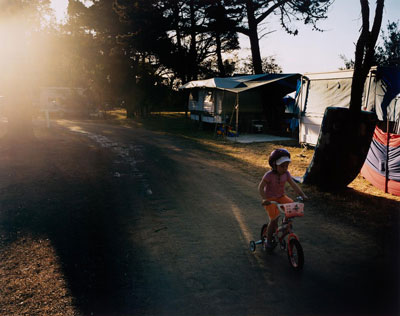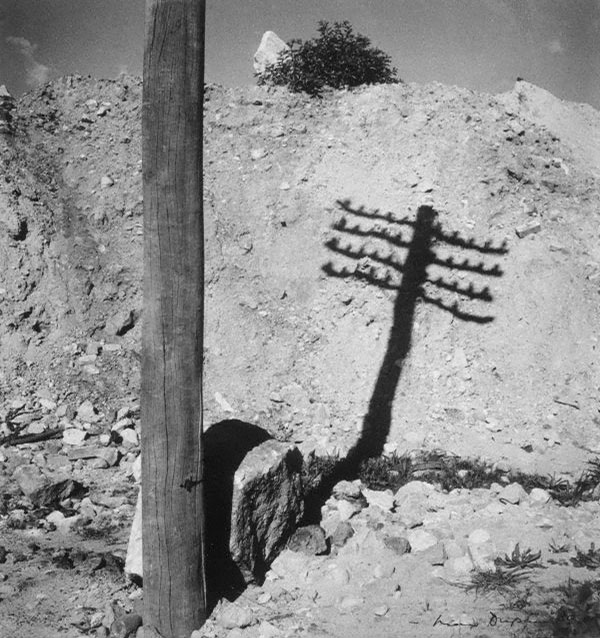AUCTION POSTSCRIPT
Mossgreen Dupain Estate Sales 2017
Gael Newton
3 July 2017
 |
| Max Dupain Backyard Forster 1940 |
Oops! In my former Mossgreen Dupain auctions autopsy I missed commenting on the surprisingly high figure in the June 2017 Dupain Estate sale for Backyard Forster 1940 of close to 15K all up – against the estimate of $600-800. It was one of only a few images over 10k in the second sale.
The gap attracted media attention from the Business Insider Australia who sought commentary from Mossgreen head of art and research, Petrit Abazi. He said bid of $3,000 was received in the room but the final result was a duel between two determined telephone bidders, the successful contender being in Melbourne.
As Abazi notes the Forster image has clear aesthetic appeal in its counterpoint of formal design, luminescence and atmosphere but also nostalgia. Coastal resort towns like Forster then still reliant on water tanks and windmills, resonant with older Australians for whom modest camping holidays were a reality.
The nostalgia was still working in 2003 -04 for 30 something photographer Matthew Sleeth when he made his Rosebud series inspired by his own family holidays at the seaside town on Mornington Peninsula, but also gave this a conceptual twist.
 |
|
 |
| From Rosebud Series, Matthew Sleeth 2003-2005 |
|
|
I'm not so sure how resonant an image like Backyard Forster it is for millennials or our multicultural contemporary society. These places remain popular as resorts but with more sophisticated offerings.
I liked the Forster image a lot for its counterpoint of a ghostly remnant of Pictorialist mist from Dupain’s romantic teenage photography, bold modernist geometry of the mid 30s and social detail from his engagement with the documentary movement in the late 30s. Its bold pipe looks great in the picture was probably ugly as a view for guests. It recalls Dupain’s key early austerely abstract image called The Post of 1935.
 |
| Max Dupain The Post c1935 |
I bought a new Forster print it seems for the Art Gallery of New South Wales and the National Gallery acquired a warmer brown toned vintage print with stronger linear details of wires and struts visible in 1983.
Dupain liked it. He included it in his 1948 monograph of his best work since 1935 and in his 1986 book Max Dupain’s Australia with the personal commentary, "Washing day seen from my hotel window. This intimate scene was taken during a trip through the Central and Northern Coast of New South Wales in my old Chevrolet Roadster”.
So maybe it was a holiday with new wife Olive Cotton. As a couple their favoured holiday however, was camping with friends on the south coast where in 1938, Max made the now iconic sunbaker images.
So we see now what is probably hotel laundry with the steam of the coppers still rising. Water from tanks and that big pipe might be for the hotel boiler as well as campers use.
I've sent an inquiry off to the local Forster historical society for possible site identification.
I used Backyard, Forster in the 1980 Art Gallery of New South Wales retrospective and associated monograph by David Ellis Press and it has been in several exhibitions at the Art Gallery of New South Wales.
The image has slight variations in cropping from the 1948 monograph to later prints.
In 2005 a mixed media collection focus called Wastelands: A poetic legacy, based on the influence of T.S. Eliott’s poetry on Australian art linked the Dupain image to Jeffrey Smart’s 1945 surreal vision of an abandoned townscape with water tower and windmill.
Dupain wrote some poetry in his youth and was deeply interested in a number of British e 20th century writers and poets but I don't think Eliott was a favourite – although Dupain had an occasionally dark view of humanity and the meaning of life. Time for some digging in my files.
The image was most recently in the National Gallery of Australia touring show Max and Olive the photographic life of Olive Cotton & Max Dupain, curated by Dr Shaune Lakin and Anne O’Hehir.
The price as Abazi notes, puts Backyard Forster up there with Dupain’s most popular (i.e. expensive) images the Sunbaker (1937); Pool at Newport 1952 and Form at Bondi (1939) - all beach pictures.
As Backyard Forster is one of my favourites I found it cheering that two private collectors had wanted that image.
In particular they were confident enough to bid an above expected price range for an image they liked and believed in. I’d love to know their age and sex but I would guess male.
It is great to have a backroom view from the auctioneer showing that while auctions tracks trends overall they are also affected by particular buyers on the day.
Gael Newton
more Essays and Articles
|